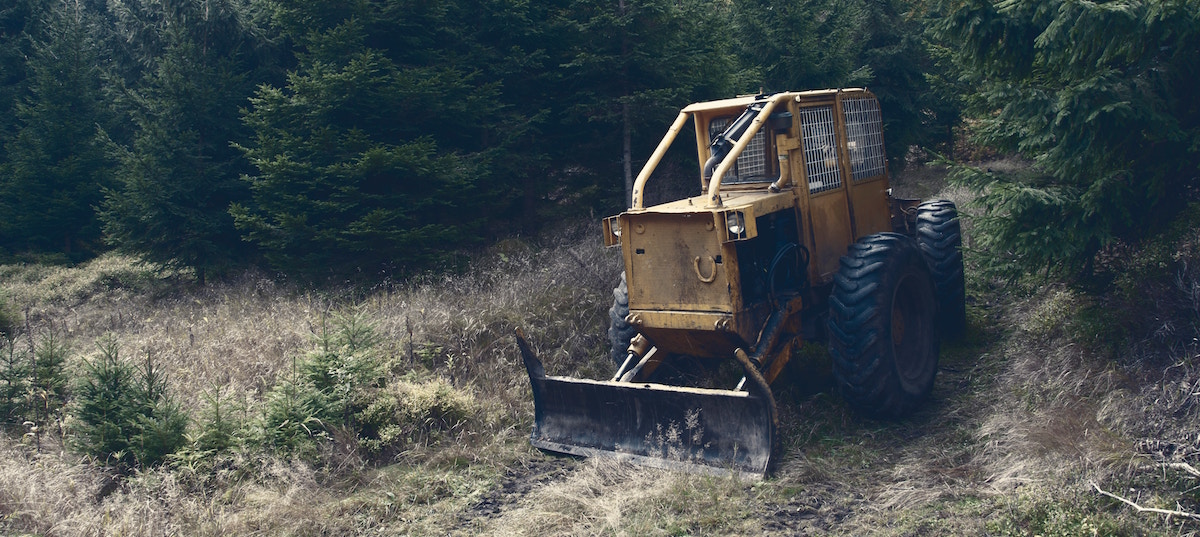Accountability: One Throat to Choke or One Hand to Shake?
“Accountability breeds response-ability.” - Stephen R. Covey, author Seven Habits of Highly Effective People
To help people to understand the point of accountability, I’ve often used this phrase:
One Throat to Choke or One Hand to Shake
I said it in short form, in a recent meeting - just One Throat to Choke - when we talked about what happens when we lack accountability, let the ball drop and then blame each other. One of the executives said he preferred ‘one hand to shake’ and the whole room started laughing.
As we discussed it, it was clear that that many people think of accountability as a consequence or a negative – as one throat to choke.
But in reality, there’s also a positive side to accountability: people know that they own something and then get a sense of satisfaction when it’s been achieved. One hand to shake.
Or, as someone said, one back to pat.
The most important thing is that, no matter what, accountability must be clear in an organization or on a project so that people know who the point person is. Ideally, we then get the opportunity to shake one hand – or many – because when one person truly has a sense of ownership the whole team gets a chance to win.
“Hold everybody accountable? Ridiculous!” - Edwards Deming, mathematical physicist who inspired the rise of Japan’s economic post-war recovery.
The Challenge
- Are you and your team clear about who is truly accountable for key KPIs, projects or processes?
Special thanks to John Shea, President, Power and Maintenance, Material Handling Services.
Employee Buy In vs Bulldozing
“In its most basic sense, leadership is about mobilizing a group of people to jump into a better future.” - John P. Kotter, author and Konosuke Matsushita, Professor of Leadership, Emeritus, Harvard Business School
A CEO and I recently talked about how challenging it is, sometimes, to get people to buy in to change or a new idea.
As he described how hard he needed to work, I had a visual in my head of a group of people who couldn’t see the value in new ideas, and the leader firing up a bulldozer to push them out of the way to get to the goal.
As we talked about this metaphor, he said, “Yeah, that’s exactly what it feels like!”
Now, one way to do it is a bulldozer. You don’t have to be smart or sophisticated, it doesn’t take a lot of have leadership skill, and if you have fearful, compliant people, it can work really well.
But if you build team of strong, intelligent people you can only use a bulldozer so many times before they get frustrated and quit - or frustrated but disengaged and stay.
The art of getting employee buy in – a lot harder.
We see, we feel, we change
One of my favourite books is about getting buy-in is Our Iceberg is Melting, Changing and Succeeding Under Any Conditions by John Kotter and Holger Rathgeber - about what it truly takes to create successful change. He has a saying:
“We see, we feel, we change.”
The root of the learning behind Kotter’s work is that people need to see a need to change (which is logic) and to feel a need to change (which is emotion), and the degree to which we see it and feel it equals the likelihood that change can occur.
For example, if we see a need to change at a .50 level, and feel it at .50 level, we have a 25% chance of achieving change.
But if we see at a .90 level and feel at a .90 level – we have an 81% chance of succeeding.
In his book, Kotter has an amazing 8-Step Process for Leading Change:

“Good communication is not just data transfer. You need to show people something that addresses their anxieties, that accepts their anger, that is credible in a very gut-level sense, and that evokes faith in the vision.” John P. Kotter, author and Konosuke Matsushita, Professor of Leadership, Emeritus, Harvard Business School
I’ve observed, in many companies, that we forget about this thing called emotion - humans are emotional beings - and then wonder why, when we use a logical approach to an emotional situation, it doesn’t work!
We blame people for not buying in, fire up the bulldozer and overpower them. We make them feel undervalued, or under-intelligent and make them strive to find everything that’s wrong with what we are trying to implement.
As leaders, our job is to understand their concerns, anxieties and legitimate issues and then incorporate them in our solutions.
With employee buy-in, we can then step ahead together to implement a great change.
If you are using a bulldozer, you need to learn how to get buy in. It’s truly a skill most leaders don’t learn on their own because they forget the emotional aspect of leadership.
The Challenge
- How good are you at truly getting mental and emotional employee buy-in on big changes?
- How can you address people’s fears and concerns about something you’re trying to get buy-in on right now?
91% A-Players: What’s Your Number?
“Leadership is having a compelling vision, a comprehensive plan, relentless implementation, and talented people working together.” Alan Mulally, former CEO, Ford Motor Company
Imagine reviewing all the key people in your company and saying, without hesitation, that 91% of them are A-Players. By that, I mean those who fit the culture of the company very well and almost always deliver as expected – and often more or better than expected.
Knowing that a typical company has between 25% and 30% who meet the A-Player standard, 91% would be an incredible accomplishment – and one that doesn’t come easily. That takes a different commitment.
In one of our first client planning sessions of 2019, I sat in a room with a team I’ve worked with for many years, to review their talent. Again and again, each one was an ‘A’ and the total came to 91%. Before this, the highest I’d ever seen was 73%, so this was the best, yet. This is an absolutely incredible accomplishment that has hours and hours and hours of hard work and tough conversation to make it happen.
Now you may think that they mark people too easily or that these talented people must be very expensive. The reality is that an A-Player doesn’t have to be more than you are willing to pay - it just means they are exceptional versus good.
It was also interesting, as we reviewed other company numbers, to see that they hit revenue goals and they were close to being 10% short-staffed. So how can you be 10% short-staffed and still hit your revenue and profit goals? Only with very, very talented people.
How did they do this?
- A few years ago, they set a goal to get a higher percentage of A-Players
- Key people attended a Topgrading workshop to learn the skills to keep the right people and to only hire top people
- They became disciplined at letting people know when they weren’t the meeting or exceeding the expectations of the company
- When people didn’t fit or couldn’t perform at a high level, they gave tough feedback and made tough decisions to ensure the team got stronger.
Now the company will catch up with hiring and, as we look forward to the next few years, we can only imagine what the company can achieve, with higher productivity and talented high-performers who fit well into a great working environment.
We all make a strong correlation between talent and performance, but most companies don’t make the commitment to only allow A Player talent to be in their most important roles and talk themselves into expecting mediocrity for all kinds of crazy reasons.
The Challenge
- What percentage of the people on your team are truly exceptional?
- What would have to happen to get that number closer to 70 or 80% - never mind 91%?
PS - If you want to learn more about how to make this happen in your company, reach out to find out about our next Topgrading™ workshop (October 29 and 30 in Vancouver); and one-on-one private sessions, as you screen candidates for important roles.
Strategic Planning: 15 minutes, 15 months, 15 years
On a recent Friday morning, I had a lot of fun sharing the principles of growing a great company with the team of frontline managers of Fossil Project Services, a fast-growing company.
The best in their field delivering impressive work for clients with exceptionally high standards, this company has grown tremendously since its inception and is getting stronger at the same time.
“Someone’s sitting in the shade today because someone planted a tree a long time ago.” - Warren Buffett, investor
Like good, fast-growing companies, they have doubled in the last three to five years and, because a key driver of their growth is building great leaders for the future – they have more than doubled their internal core competencies.
Our intention, in this session, was to teach these current and future leaders many of the principles we use in planning sessions and developing senior leaders. So we taught them the principles of Scaling Up, Rockefeller Habits 2.0, Your Oxygen Mask First and other valuable tools.
When we were talking about strategy, the General Manager Dave Kearns made an interesting comment to his team that, to continue to make the company better, we can’t be looking just 15 minutes ahead, we need to be looking 15 months and even 15 years ahead.
That was profound because the long-term vision of a company is meant to be 15 years ahead and the strategies to take big steps ahead are 15 months - or more - ahead. But the work we have to do now is really a 15-minute focus.
The Challenge
- Do you spend enough time on 15 months and 15 years?
- And when you are looking at 15 minutes, are you looking at the highest value strategies that will have the highest impact today and 15 years from now?
Aside from the pleasure of sharing new concepts, is seeing how people, in many different roles, truly aspire to grow and improve. To me, there’s nothing more inspiring.
Core Values as a Safety Issue
During a recent session for a local, fast-growing company in the construction industry, I had an insight about core values.
After a conversation about safety (a big focus for this company in the construction industry), the topic turned to core values. And it came to me, as we were speaking, that when there is a core values violation in the company it’s equivalent to a safety violation.
“The safety of the people shall be the highest law.” - Marcus Tullius Cicero, Roman statesman
The vision and culture of a company are defined, shaped, and supported by core values. Essentially, they provide a ‘safe’ and rewarding environment in which business gets done. Any violation needs to be taken very seriously and, ideally, very clearly communicated to the person who made the violation. This will help prevent it from happening again.
Companies with a focus on safety are very good at this. They will write people up, have conversations, give written notices and warnings (like giving a traffic ticket).
When it comes to core values violations, sometimes we don’t take it as seriously. as a result, bad behaviour grows – just like lackadaisical safety practices.
The Challenge
- Do you treat core values in your company as seriously as a construction company would treat safety practices?
Learn from Others and Set the Stage for Success
Our firm just had an opportunity to help with a phenomenal team-building event for a leadership team in Grand Forks, North Dakota. It was freezing when we landed and felt like the middle of nowhere but the executive in charge wanted to do it at the spectacular Ralph Engelstad Arena, commonly called The Ralph. When we got to the venue, we understood why.
“As a player, you have one responsibility, to focus yourself and be ready for the game. As a coach, your responsibility is to get 20 guys ready and have them all on the same page. If you can’t get every guy ready every night, you’re going to struggle.” - Wayne Gretzky
Called the “Taj Mahal of hockey," this $104 million-arena was built for the Fighting Hawks, the University of North Dakota (UND) men’s ice hockey team, by Mr. Engelstad who once played for the team, and had done very well in business.
The Ralph is spectacular, with the design and quality of a five-star hotel: granite floors, cherry wood seats with leather upholstery and full-colour LCDs throughout. It’s one of the finest of its kind in the world – even the Great One, Wayne Gretzky, called it one of the most beautiful buildings in North America. No wonder it’s one of Trip Advisor’s top-rated destinations in America.
This building is not just style: it produces substance and hosts one of the most successful college hockey programs in the US. In fact, over 250 UND alumni have gone on to play professional hockey.
So what better place to inspire a leadership team to greatness - to sound a battle cry - than a venue that epitomizes vision, hard work and success? We tried to create a day to do it justice.
Set the Stage for Success
The amazing speaker Rudy Ruettiger - the Notre Dame football player whose story of persistence was told in the 1993 movie Rudy - kicked off the event. The next morning, we heard from Rudy again, and met and spent time with the Fighting Hawks’ players and coaches, and then got to work planning strategies for the year. Needless to say, as we got to work planning strategies for the year, we were energized and inspired. The whole event was amazing, and the lessons were incredible – particularly key takeaways about what to do when you hit a rough patch. Rudy gave great advice to all of us, including the hockey team who had just lost a few games: Stay focused on the people who are going to support you to make things better.
“Don't ever, ever quit. Recognize that stopping now, regrouping to try a new approach isn't quitting. If you quit, you'll regret it forever.” - Rudy Ruettiger
Now, it may seem like a such simple idea to meet the coach and players of a high-performing team but, combined with being physically immersed in such a spectacular high-performing environment, made it amazing. And some would think that, by starting off so strongly, the rest of the meeting may be quite blah in comparison. Instead, all that great energy brought the team together - more tightly, more aligned and more focused on the strategy. And I must say - having done hundreds of events like this - it was one of the most powerful I’ve been part of.
If the energy in the locker room is good the team is good. Same goes for the board room.
The Challenge
- When was the last time you had your team learn from greatness outside our organization?
- Where can you take your team that exemplifies everything you want them to be?
- How can you align and inspire them to greatness as you do your planning?





